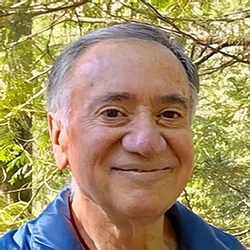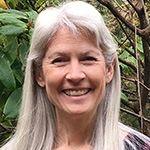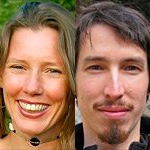

Search Results: observation
-
Yoram Mosenzon explores the core NVC principle that others do not cause our feelings—our interpretations and unmet needs do.
-
How The Work from Byron Katie connects to the observation step of the NVC process.
-
Building your body and mind awareness can help you better regulate/calm your emotions. Regular self-empathy will help you better regulate your emotions as well as increase your body and mind awareness. If you are not aware of amygdala activation (fight/flight/freeze response), you will react instead of responding with choice. Use this eight-step process to develop your self-empathy/regulation skills.
-
Jim and Jori offer a tip to stay present in the face of our reactivity to witnessed conflict.
-
The more we practice NVC by “rote” --going through OFNR (“Observations, Feelings, Needs, Requests”) on automatic-- the more likely our NVC practice would lead to disconnection. The purpose of our NVC practice is to use this NVC "map" (OFNR) to support us in integrating the consciousness of the NVC (eg. operating with the intention to connect, collaborate, etc). Once we let the map drop away, we can engage with the people in our lives in a more heartfelt way. This article explains more about how we can use the map to remind us of our heartfelt consciousness...
-
Ask the Trainer: “I would like some suggestions on how to interact with a member of the practice group I started. This individual speaks and acts in a manner I interpret as angry and controlling.”
-
What do we do when someone speaks to us in a way that doesn’t feel respectful? In this video, Oren Jay Sofer explores how NVC invites us to listen for the feelings and needs behind harsh or judgmental words — not because we “should,” but because it gives us more choice and freedom in how we respond.
-
Based on your observations of "power with" interactions choose a specific, do-able to practice so that you're prepared the next time you're in a power under/power over dynamic. Keep the practice simple to do in a difficult moment. Then reflect: identify what you did (internally or externally) or said that (de)escalated the dynamic. This practice requires noticing what went well, self compassion, perseverance, and support.
-
Self responsibility is owning what's yours. It involves identifying your observations, evaluations, feelings, longings, and more. When we identify what's truly ours we are unlikely to mistake it as coming from outside of us. Self responsibility is not self blame. Without self responsibility, we project, blame and judge. Self-responsibility is central to clarity and full self-awareness. This exercise will guide you there.
-
Inbal answers a parent's question about praise and offers a perspective on how praise translates into the NVC framework.
-
Sylvia Haskvitz shares NVC basics to help you improve understanding and connection in communication.
-
Kathleen Macferran guides you to bring NVC into daily life and break old patterns.
-
Explore what blocks us from speaking truth and how honesty builds trust and growth.
-
Discover how replacing "niceness" with honesty, passion, and compassion restores aliveness.
-
Kelly Bryson shows how clear intention and awareness transform pain into growth.
-
Join CNVC Certified Trainers Inbal Kashtan and Roxy Manning, for a passionate and intimate exploration of how NVC can support personal and social transformation in the area of power relations and social divisions.
-
If role-play, hearing conversations modeled, and dialogue practice is how you learn, this 4-part telecourse recording is for you! Learn the art of entering into, staying in, and bowing out of “the dance” of communication, playing with your real-life situations using the four components of Nonviolent Communciation as the foundation.
-
Bask in this telecourse recording with Kathleen Macferran and explore ways to nurture and maintain greater depths of joy by focusing on gratitude. The reward? To increase your ability to live fully present to the joy in life, even in the midst of pain.
-
How can we express ourselves in a way that supports a natural flow of connection while maintaining a focus on NVC consciousness? This handout from CNVC Certified Trainer, Miki Kashtan, offers seven options that support NVC enthusiasts in evolving from classical to colloquial NVC language.
-
Experience John Kinyon's application of NVC Founder Marshall Rosenberg's 4-part model of reconciliation and healing, a model he developed over the course of decades of work with people around the world who have experienced the deep pain of violence.

Quick Links
Subscription Preferences
Stay In Touch!
Looking for ways to keep up with NVC Academy news, get special offers, free resources, or words of inspiration? Here are five ways to stay engaged:



















